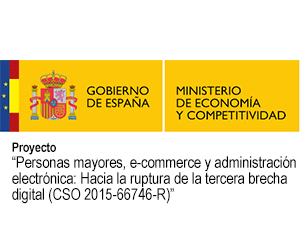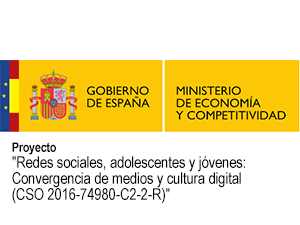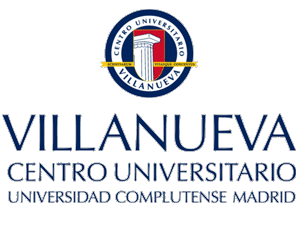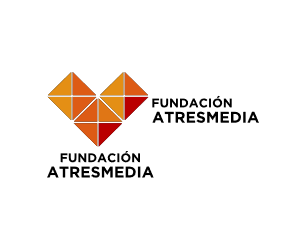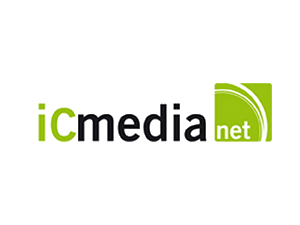Resumen
La toma de conciencia acerca de la necesidad de integrar la Educación Mediática en el sistema educativo no ha dejado de fortalecerse en la última década. Siguiendo las recomendaciones de los expertos internacionales (UNESCO, 2011), decidimos analizar las posibilidades de mejora de este ámbito, dentro del plan de formación inicial de profesorado de Secundaria, en la Universidad de Cádiz. Considerándonos mediadores entre todos los agentes implicados, conocer la opinión al respecto del profesorado supone un elemento basal de nuestro estudio, que se complementa con un cuestionario a los estudiantes y otra información cualitativa obtenida a través de entrevistas y grupos focales.
En este trabajo, compartimos la percepción del profesorado a partir de los resultados de una consulta enviada, al finalizar el curso 2015-2016, a los 58 docentes adscritos al Máster Universitario en Profesorado de Educación Secundaria Obligatoria y Bachillerato, Formación Profesional y Enseñanza de Idiomas (MAES) de la Universidad de Cádiz. Para buena parte de los 33 docentes que completaron todas las respuestas, los medios de comunicación e información multimodales son importantes en la enseñanza de las asignaturas, mientras que el trabajo para el desarrollo de las competencias mediáticas e informacionales (Alfabetización Mediática e Infomacional. Currículum para profesores, 2011:30-35) en el alumnado no se atiende con el mismo interés. Poco más de la mitad de los docentes piensa que al menos cuatro, de las dimensiones clave (Ferrés, J. & Piscitelli, A. 2012:79-81) en este ámbito, están presentes en el currículum del MAES y en la asignatura que imparten, pero sobre todo dos de ellas -tecnología (casi un setenta por cien) y lenguajes (hasta el setenta y cinco por cien)- creen que están integradas en el enfoque didáctico propio. En cuanto a las prácticas docentes relativas a la educación en medios, apenas superan los valores medios, aunque es destacable que el valor más elevado lo haya obtenido la evaluación crítica de las fuentes de información y de los contenidos mediáticos, en concordancia con las preocupaciones de los expertos internacionales. Menor atención aún se dedica al análisis de la representación de la realidad en los medios, con unos valores muy bajos en el caso de las representaciones de los distintos colectivos sociales, culturales o de otras ideas o creencias religiosas. Esto contrasta con la opinión de que, para la mayoría, el enfoque analítico es el principal el MAES, mientras que en la enseñanza reglada creen que predomina el enfoque instrumental. En general los resultados indican una preocupación media por la acción didáctica desde una perspectiva analítica, pero poca atención al uso de los contenidos audiovisuales para el desarrollo de la competencia mediática.
Como conclusión, creemos que los docentes de formación inicial de profesorado de secundaria tienen una idea confusa del ámbito, así como de sus implicaciones educativas. Por lo que pensamos que, para avanzar en la mejora de la educación mediática, requieren orientación y asesoramiento, así como una formación previa para cuyos condicionantes estimamos la sistematización de la construcción compartida de conocimiento como la vía más adecuada.
Palabras clave: Educación Mediática, Formación Inicial de Profesorado, Educación Secundaria, Competencias Mediáticas e Informacionales, Alfabetización Mediática.
Palabras Clave /
Abstract
The awareness of the need to integrate Media Education into the education system has not stopped strengthening in the last decade. Following the recommendations of international experts (UNESCO, 2011), we decided to analyze the possibilities of improvement in this area, within the initial teacher training plan for Secondary Education, at the University of Cádiz. Considering that we are mediators among all the agents involved, knowing the opinion of the teaching staff is a baseline element of our study, which is complemented by a questionnaire to the students and other qualitative information obtained through interviews and focus groups.
In this work, we share the perception of the teaching staff based on the results of a consultation sent, at the end of the 2015-2016 academic year, to the 58 teachers assigned to the University Master’s Degree in Compulsory Secondary Education (MAES ) of the University of Cádiz. Most of the 33 teachers who completed all the answers, the multimodal media and information are important in the teaching of the subjects, while the student media and information competencies development (Media and Infomation Literacy. teachers, 2011: 30-35) is not attended with the same interest. Just over half of the teachers think that at least four, of the key dimensions (Ferrés, J. & Piscitelli, A. 2012: 79-81) in this area, have presence in the MAES curriculum and in the subject they teach. But above all, they believe that two of them -technology (almost seventy percent) and languages (up to seventy-five percent)-, are integrated into their own didactic approach.
Regarding teaching practices related to media education, they barely exceed average values, although it is remarkable that the highest value has been obtained from the critical evaluation of information sources and media content, in accordance with the concerns of the media literacy international experts. Less attention is still given to the analysis of the representation of reality in the media, with very low values in the case of representations of groups with different social, cultural or ideological background or religious beliefs. It is also striking the little use that is made of audiovisual content for the development of key aspects in media competences. This contrasts with the opinion that, for the majority, the analytical approach is the main in the MAES, while in formal education they believe that the instrumental approach predominates.
The awareness of the need to integrate Media Education into the education system has not stopped strengthening in the last decade. Following the recommendations of international experts (UNESCO, 2011), we decided to analyze the possibilities of improvement in this area, within the initial teacher training plan for Secondary Education, at the University of Cádiz. Considering that we are mediators among all the agents involved, knowing the opinion of the teaching staff is a baseline element of our study, which is complemented by a questionnaire to the students and other qualitative information obtained through interviews and focus groups.
In this work, we share the perception of the teaching staff based on the results of a consultation, sent at the end of the 2015-2016 academic year, to the 58 teachers assigned to the University Master’s Degree in Compulsory Secondary Education (MAES ) of the University of Cádiz. Most of the 33 teachers who completed all the answers, the multimodal media and information are important in the teaching of the subjects, while the student media and information competencies development (Media and Infomation Literacy. teachers, 2011: 30-35) is not attended with the same interest
Just over half of the teachers think that at least four, of the key dimensions (Ferrés, J. & Piscitelli, A. 2012: 79-81) in this area, have presence in the MAES curriculum and in the subject they teach, but above all, two of them -technology (almost seventy percent) and languages (up to seventy-five percent)-, they believe that are integrated into their own didactic ap Just over half of the teachers think that at least four, of the key dimensions (Ferrés, J. & Piscitelli, A. 2012: 79-81) in this area, have presence in the MAES curriculum and in the subject they teach. But above all, they believe that two of them -technology (almost seventy percent) and languages (up to seventy-five percent)-, are integrated into their own didactic approach.
Regarding teaching practices related to media education, they barely exceed average values, although it is remarkable that the highest value has been obtained from the critical evaluation of information sources and media content, in accordance with the concerns of the media literacy international experts. Less attention is still given to the analysis of the representation of reality in the media, with very low values in the case of representations of groups with different social, cultural or ideological background or religious beliefs.
It is also striking the little use that is made of audiovisual content for the development of key aspects in media competences. This contrasts with the opinion that, for the majority, the analytical approach is the main in the MAES, while in formal education they believe that the instrumental approach predominates.
In conclusion, we believe that teachers of initial teacher training of secondary education have a confused idea of the field, as well as its educational implications. So we think that, in order to advance in the improvement of media education, they require orientation and counseling, as well as a previous training, for whose conditioners we estimate the systematization of the shared construction of knowledge as the most appropriate way.
Key words: Media Education, Initial Teacher Training, Secondary Education, Media and Information Competences, Media Literacy.
Keywords /
FIRMANTES
| Nombre | Adscripción | Procedencia |
|---|---|---|
| Michel Santiago del Pino | Universidad de Cádiz | Cádiz |
| Manuel Francisco Romero Oliva | Universidad de Cádiz | Cádiz |
| Cristina Goenechea Permisán | Universidad de Cádiz | Cádiz |






